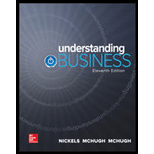
To think critically about: The union shop agreements as the violation of freedom of choice at workplace and examine if the agreements unfairly penalize workers that pay dues to the unions they elected.
Introduction:
The agreement as per which the non-members of the union can only be hired for a fixed period of 30days and the further employment depends upon the membership in the union is referred to as the union shop agreement.
Explanation of Solution
The freedom of choice seems to be violated by the union shop agreements as the workers if hired are obliged to become the member of the union. In case, the workers do not wish to become a member, the same fees or dues are applicable to all. As, the employment opportunity are a few, this becomes a case of sheer blackmail to pay the unwanted dues. The workers can neglect the association with such unions to get saved from an agreement situation.
The dues that are paid by the workers as per the union shop agreement if known as to where is it spend or its usage is defined by the union cannot be defined as unfair. If the option to join the union is in the hand of worker and the expenditure of fairs are fairly discussed, the workers will not be addressed as unfairly penalized.
Therefore, it can be concluded that the freedom of the workers is violated in a union shop agreement and the workers are not unfairly penalized if the dues are paid intentionally.
Want to see more full solutions like this?
Chapter 12 Solutions
Understanding Business
- _____________ addresses changes within the internal and the external business environment, and can range from strikes to natural disasters, bereavement and other occurrences Question 50Answer a. Strategic Planning b. Contingency Planning c. Disaster Planning d. Organizational Planning Clear my choicearrow_forward_____________ is the name given to the firm investing in international operations Question 51Answer a. Host Company b. Global Company c. International Company d. Parent Company Clear my choicearrow_forwardWhich of the following tools are the most appropriate for analyzing the macro-environment? Question 53Answer a. SWOT analysis b. Value Chain Analysis c. Benchmarking d. PESTLE frameworkarrow_forward
- ________________is called the “action stage” of strategic management. Question 48Answer a. Strategy management b. Strategy implementation c. Strategy evaluation d. Strategy formulationarrow_forwardWhen evaluating an organization's strategy, it is important to note that corrective actions are almost always needed except when internal and external strategic positions have not changed. The basis of any review would require the redevelopment of a: ____________________________ Question 31Answer a. Value Chain Analysis b. SWOT Analysis c. EFE and IFE Matrix d. PESTLE Analysisarrow_forward___________________refers to the process of redesigning a vertical organisation along its horizontal workflows and processes. Rather than focusing on narrow jobs structured into distinct functional departments, they emphasise core processes that cut horizontally across the organisation and involve teams of employees working together to serve customers Question 23Answer a. Workforce Configuration b. Structural Reengineering c. Business Process Reengineering d. Horizontal Configurationarrow_forward
- Alternative plans that can be put into effect during strategic evaluation if certain key events within the strategic plan do not occur as expected. Question 20Answer a. Contingency Plan b. Strategic Evaluation Plan c. None of the provided options d. Emergent Planarrow_forwardAssuring results is an attainable habit of a strategic leader only if a strategic leader is intentional in developing high performing organisations. Strategic leaders must be intentional in this because they can shape the organisational culture, or the culture may ‘manage’ the leader. One way to do this is to ______________ Question 17Answer a. Develop a Strategic Leadership plan b. Develop a Strategic Implementation Plan c. Implore levers of change d. Develop a Vision Statementarrow_forwardThis stage of the strategic management process, provides a control loop in determining the successful implementation of corporate, competitive, functional and global strategies. It seeks to ascertain the nature of the change betweenplanned strategies and its resultant emergent strategies Question 16Answer a. Strategic Advantage b. Strategic Formulation c. Strategic Implementation d. Strategy Evaluationarrow_forward
- Higher product quality than rivals, Superior on-time delivery, A bigger market share, are all examples of: Question 11Answer a. Financial objectives b. Competitive Advantage objectives c. Components of Mission Statement d. Strategic objectivesarrow_forward_________________ are defined as forces that shape on organisation’s strategy Question 10Answer a. Strategic Drivers b. Strategic Levers c. Human Resourcesarrow_forwardStrategy Evaluation may determine if the organisational mission is no longer appropriate or that organisational strategies are not leading to the desired outcomes. True or False?arrow_forward
 Foundations of Business (MindTap Course List)MarketingISBN:9781337386920Author:William M. Pride, Robert J. Hughes, Jack R. KapoorPublisher:Cengage Learning
Foundations of Business (MindTap Course List)MarketingISBN:9781337386920Author:William M. Pride, Robert J. Hughes, Jack R. KapoorPublisher:Cengage Learning Management, Loose-Leaf VersionManagementISBN:9781305969308Author:Richard L. DaftPublisher:South-Western College Pub
Management, Loose-Leaf VersionManagementISBN:9781305969308Author:Richard L. DaftPublisher:South-Western College Pub Foundations of Business - Standalone book (MindTa...MarketingISBN:9781285193946Author:William M. Pride, Robert J. Hughes, Jack R. KapoorPublisher:Cengage Learning
Foundations of Business - Standalone book (MindTa...MarketingISBN:9781285193946Author:William M. Pride, Robert J. Hughes, Jack R. KapoorPublisher:Cengage Learning Purchasing and Supply Chain ManagementOperations ManagementISBN:9781285869681Author:Robert M. Monczka, Robert B. Handfield, Larry C. Giunipero, James L. PattersonPublisher:Cengage Learning
Purchasing and Supply Chain ManagementOperations ManagementISBN:9781285869681Author:Robert M. Monczka, Robert B. Handfield, Larry C. Giunipero, James L. PattersonPublisher:Cengage Learning




